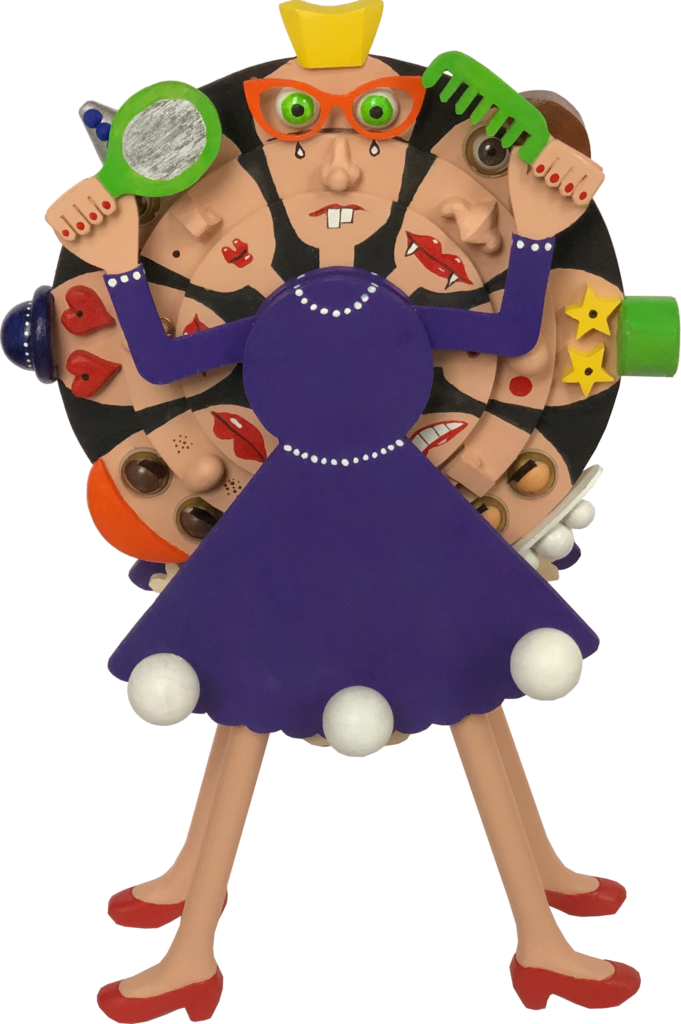
Some while ago I enjoyed a video produced by an Italian artist Giuseppe Ragazzini (https://www.youtube.com/watch?v=VurUCgxdp8E) and I thought it would be fun to make my own real world, wooden version which doesn’t need an internet connection. Then a friend gave me some doll’s eyes, the sort of eyes which close when a doll is put to sleep. That was enough to finally get me started on the Bizarre Belle of the Ball.
Requirements
I chose to have 8 sets of eyes mounted on one disc, 8 noses on a second disc and 8 mouths on a third disc which is enough for 512 distinct faces so that our belle can go to 512 balls and never have to look the same twice.
To frame each face and concentrate the viewer’s attention on it, it seemed best to use our bizarre belle’s arms. Whenever her eyes are correctly aligned, both arms should come up. To make it a more convincing gesture, she should hold a mirror in one hand to admire the finished effect and a comb in the other to tidy her non existent hair. One turn of each control knob should rotate the disc through exactly one eighth of a turn.
Making
The smallest 3 mm plywood disc is attached to a solid 6 mm axle. This axle runs inside a thicker hollow axle for the middle-sized disc. The largest diameter disc turns around both with several spacers joining the disc to its cog while leaving room for the doll’s eyes.
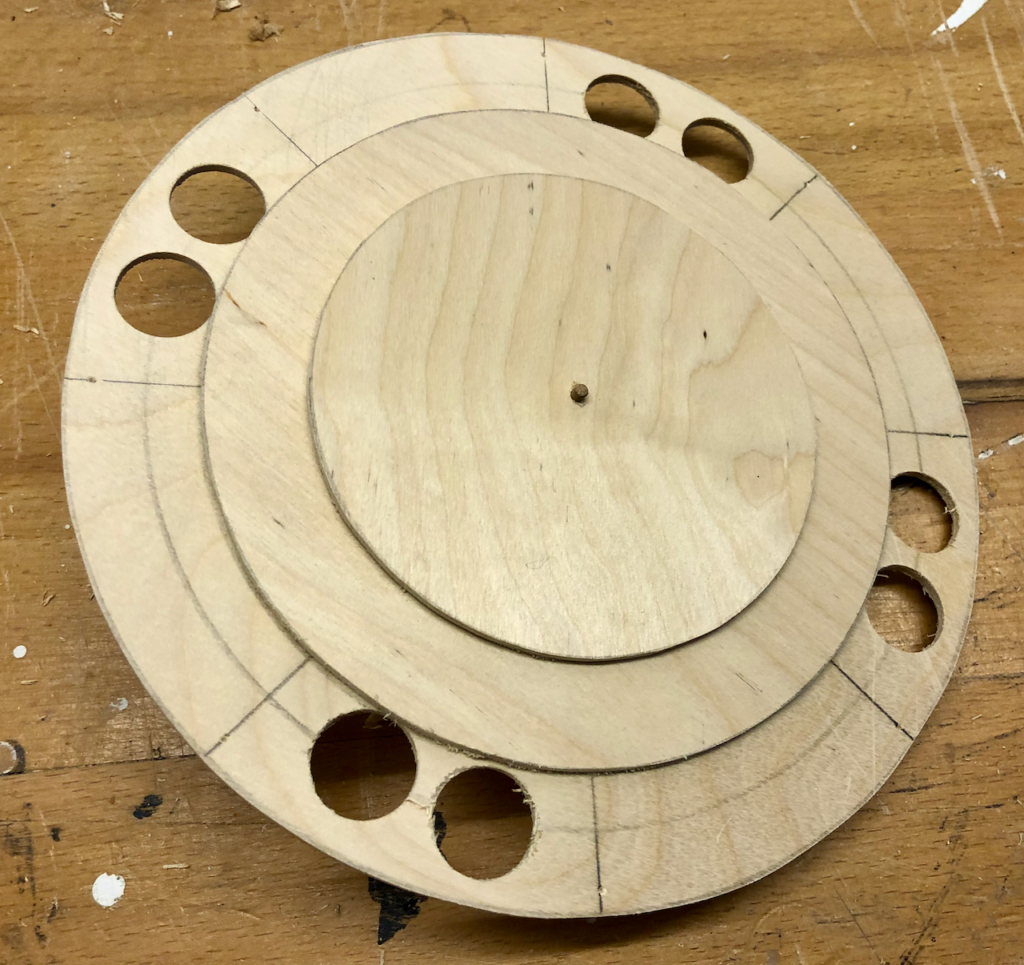
If that sounds complicated, here is a section through the middle. This means you are looking at these discs from the side
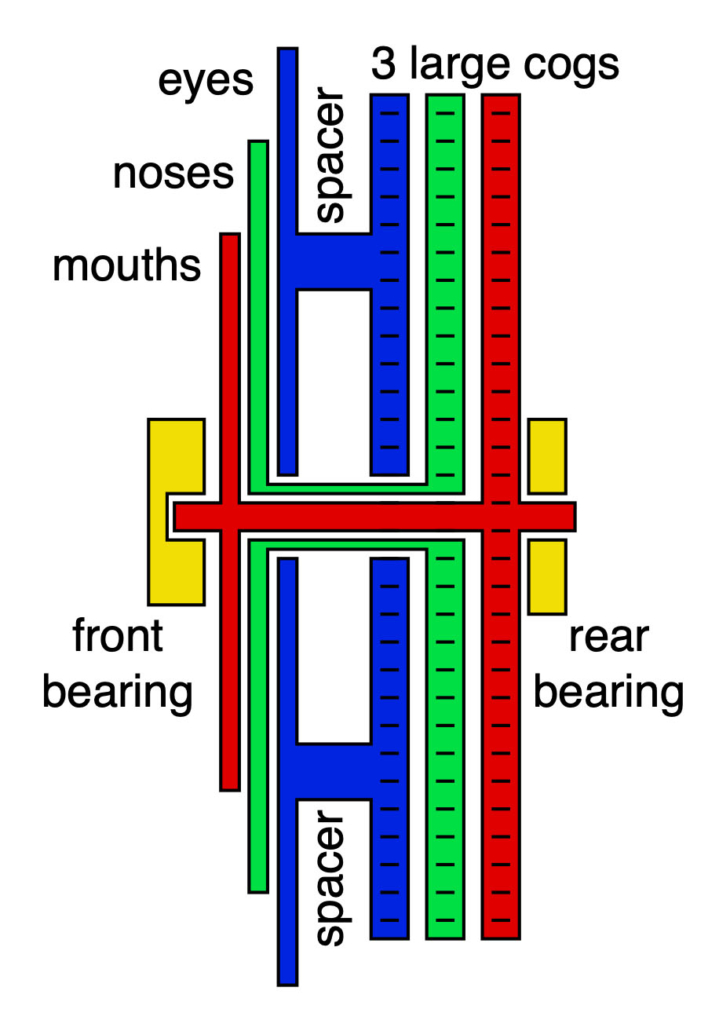
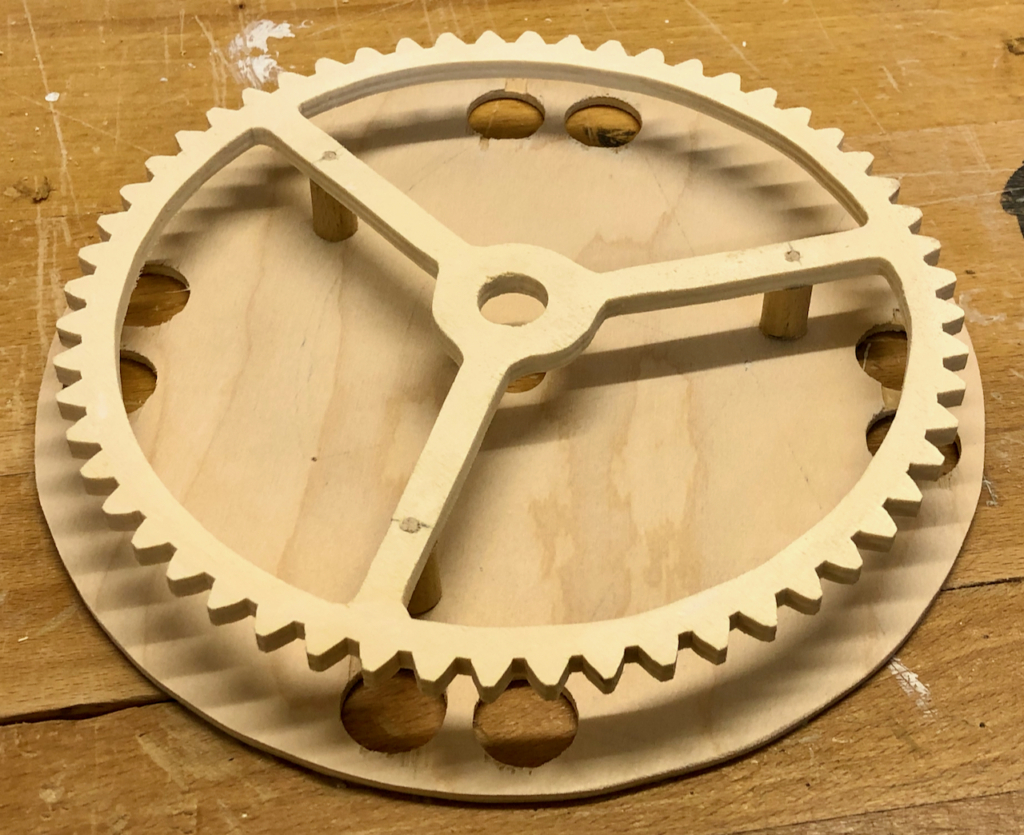
To make the 3 discs turn, you then need 3 large cogs behind them.
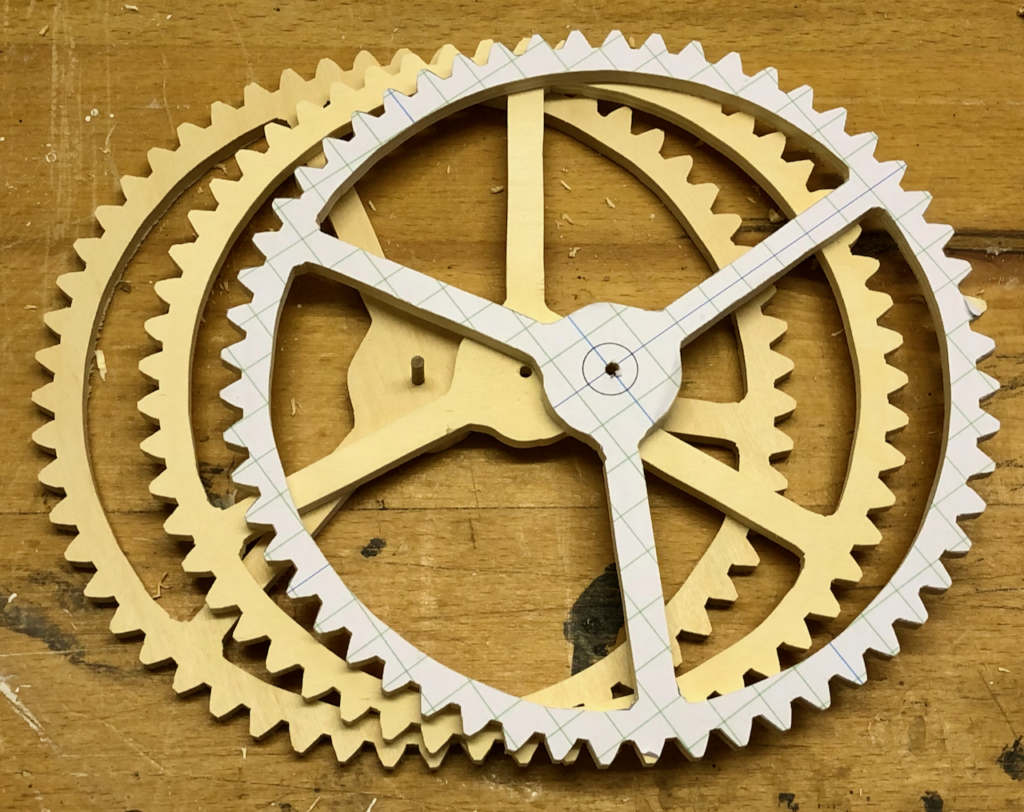
Small cogs will drive the big ones, so the number of teeth is important to set the speed of rotation of each disc. With 8 noses etc., the number of teeth on the big cogs must be 8 times the number of teeth on the small cogs, so that one turn of the control by the user moves from one nose to the next. I chose 7 teeth for the small cogs which then means 56 teeth for the big cogs. I find that cogs with small numbers of teeth can jam easily and 7 is actually quite close to the limit.
To shape the cogs I used Matthias’ splendid online gear template generator https://woodgears.ca/gear_cutting/template.html. To save time and work here, I first pinned three sheets of 6 mm plywood together, glued the template on top and then cut the three large cogs at once with my scroll saw.
Body and legs
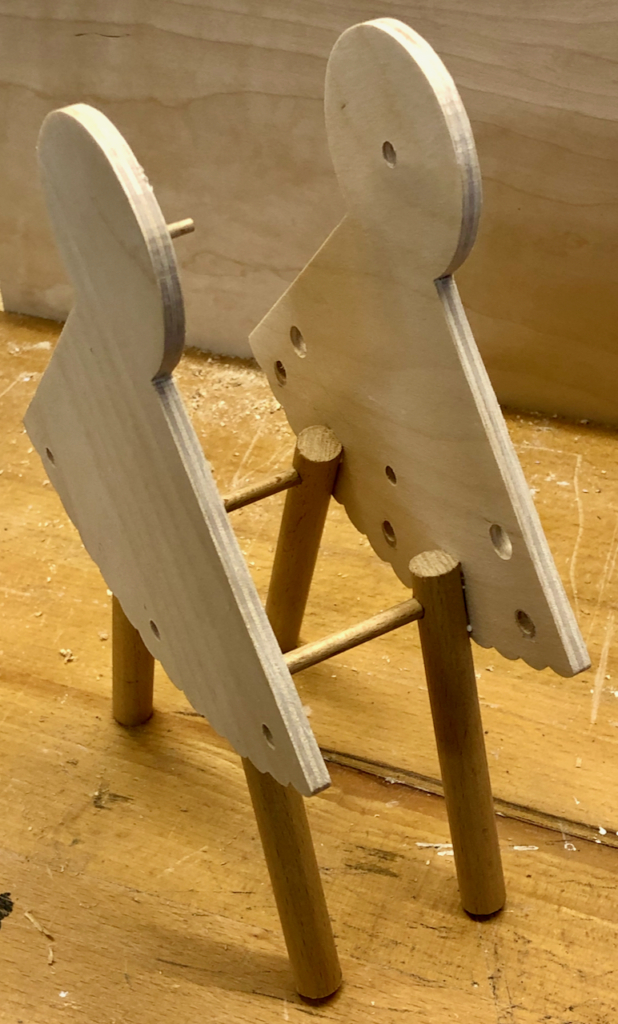
To hold the rotating discs and cogs some sort of frame is required. A dress with a wavy frill at the bottom and a round upper body seemed about right. Two legs would be a bit unstable, so my bizarre belle has four legs. The front part also has to take the mechanism to lift the arms up. Some elegant carved shoes are, of course, needed to equip our belle for the ball.
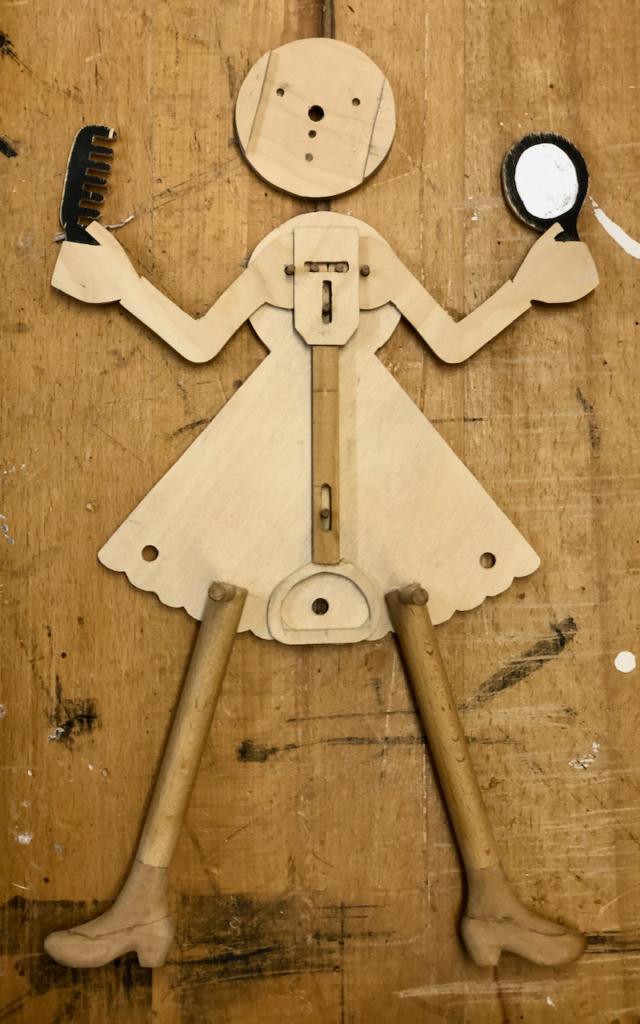
The hole between the legs takes an axle fitted with an eccentric cam. As the axle is turned the cam presses the vertical actuator down, which pulls the arms up. The loose round part at the top is the lid to keep all of the parts in place and it also has a hole in the middle which serves as the bearing for the axle for the rotating assembly.
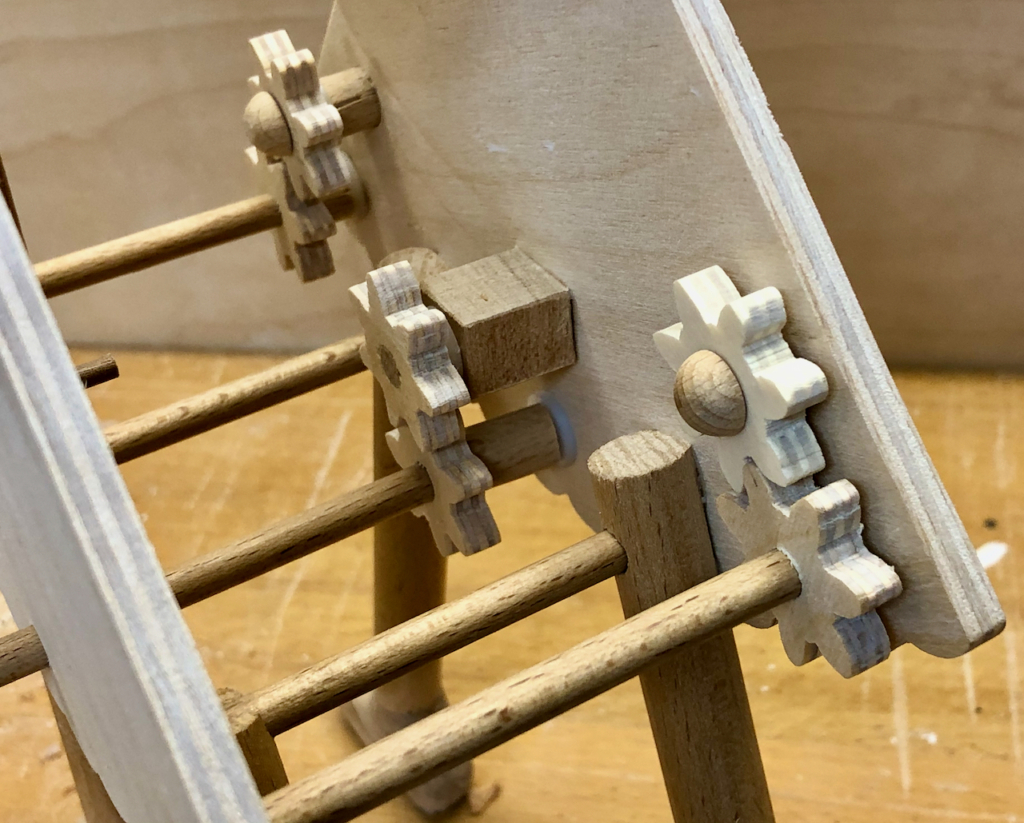
The rear part of the body carries 6 small cogs, 2 for each large cog. They are each set at the correct height to drive their own large cog and hence the corresponding disc with noses (left) eyes (centre) and mouths (right). Each knob on the front of the figure turns an axle which turns one of the small cogs. The reason for the second, identical cog is to provide enough space for the hats on the largest dic to move unimpeded. As the two cogs are identical there is no change to the transmission ratio and one turn of the knob will still move its disc through one eighth of a turn.
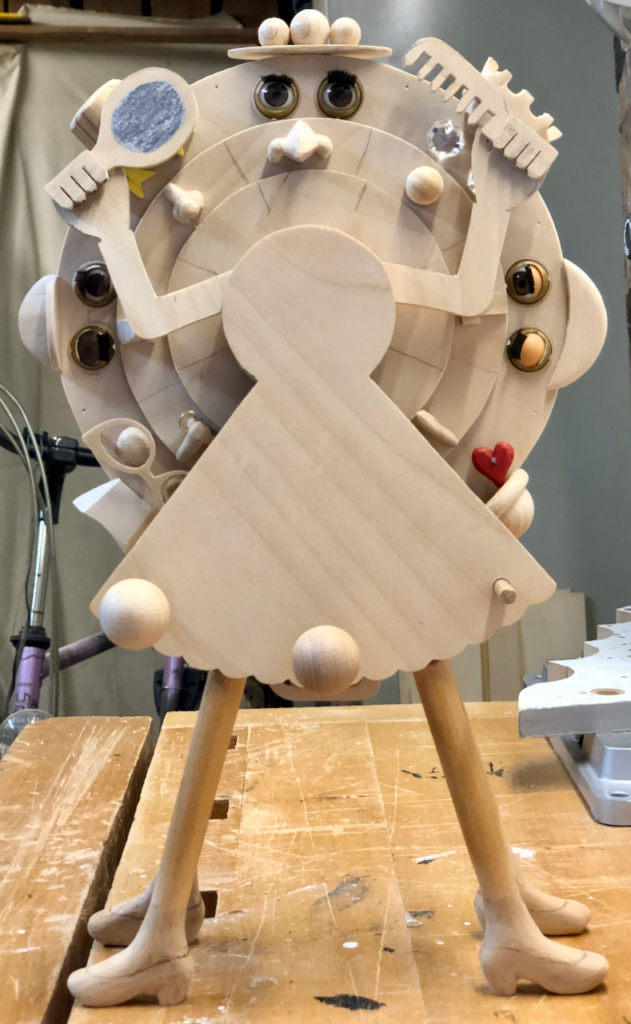
Putting the parts together after carving eight noses, our bizarre belle starts to take shape. I was surprised to see that, when near horizontal, the doll’s eyes close and open one at a time, as if they are winking at me. Only having four sets of doll’s eyes, I improvised eyes for the other four faces.
Lessons learned
I had originally planned to use three cranks in front of the dress to turn the parts, which would have meant putting the figure on a heavy base. I find that on the up-stroke when turning a crank, models tend to skitter around unless they are heavy enough or have a non-slip coating underneath. By changing to spherical knobs, which you have to twist to operate, the upward force disappears and with it the need for a base. Magic!
The video
It is easiest to understand the mechanisms when you can see them in action so here is our belle of the ball deciding how to look for her next ball. https://www.youtube.com/watch?v=gMLE70_scGE
Download
Download images here https://www.wordwise.de/Belle_images.zip
